#spaceblr
Text
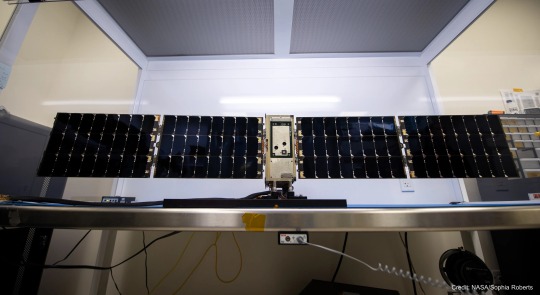
Tiny BurstCube's Tremendous Travelogue
Meet BurstCube! This shoebox-sized satellite is designed to study the most powerful explosions in the cosmos, called gamma-ray bursts. It detects gamma rays, the highest-energy form of light.
BurstCube may be small, but it had a huge journey to get to space.
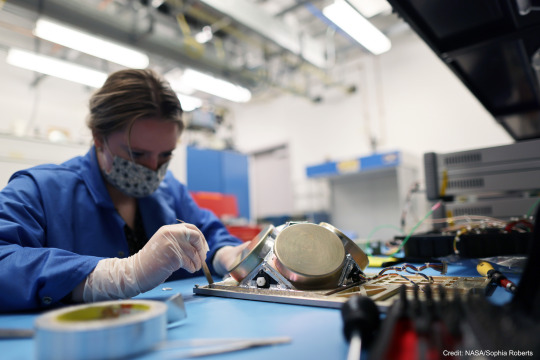
First, BurstCube was designed and built at NASA’s Goddard Space Flight Center in Greenbelt, Maryland. Here you can see Julie Cox, an early career engineer, working on BurstCube’s gamma-ray detecting instrument in the Small Satellite Lab at Goddard.
BurstCube is a type of spacecraft called a CubeSat. These tiny missions give early career engineers and scientists the chance to learn about mission development — as well as do cool science!
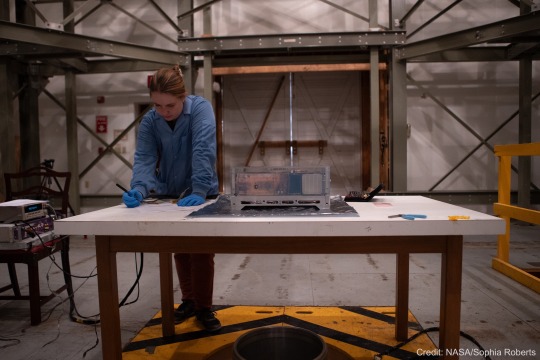
Then, after assembling the spacecraft, the BurstCube team took it on the road to conduct a bunch of tests to determine how it will operate in space. Here you can see another early career engineer, Kate Gasaway, working on BurstCube at NASA’s Wallops Flight Facility in Virginia.
She and other members of the team used a special facility there to map BurstCube’s magnetic field. This will help them know where the instrument is pointing when it’s in space.
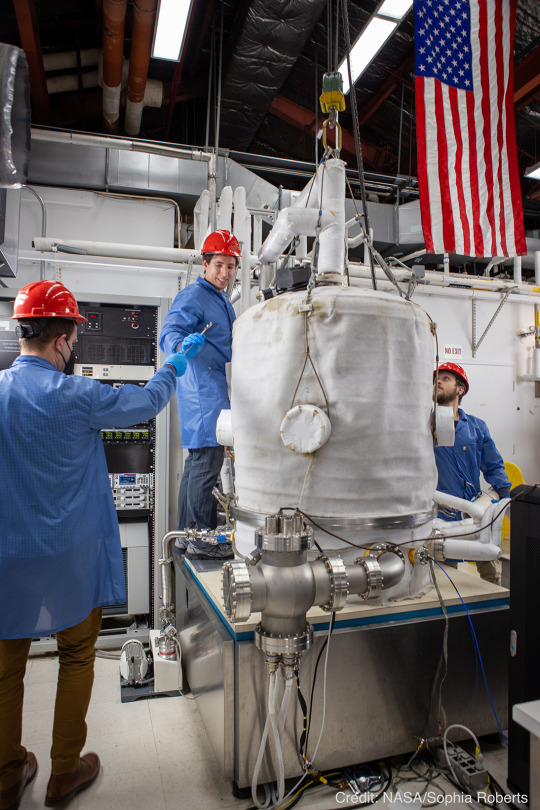
The next stop was back at Goddard, where the team put BurstCube in a vacuum chamber. You can see engineers Franklin Robinson, Elliot Schwartz, and Colton Cohill lowering the lid here. They changed the temperature inside so it was very hot and then very cold. This mimics the conditions BurstCube will experience in space as it orbits in and out of sunlight.
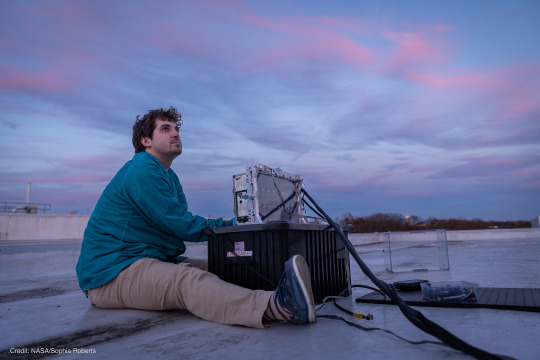
Then, up on a Goddard rooftop, the team — including early career engineer Justin Clavette — tested BurstCube’s GPS. This so-called open-sky test helps ensure the team can locate the satellite once it’s in orbit.
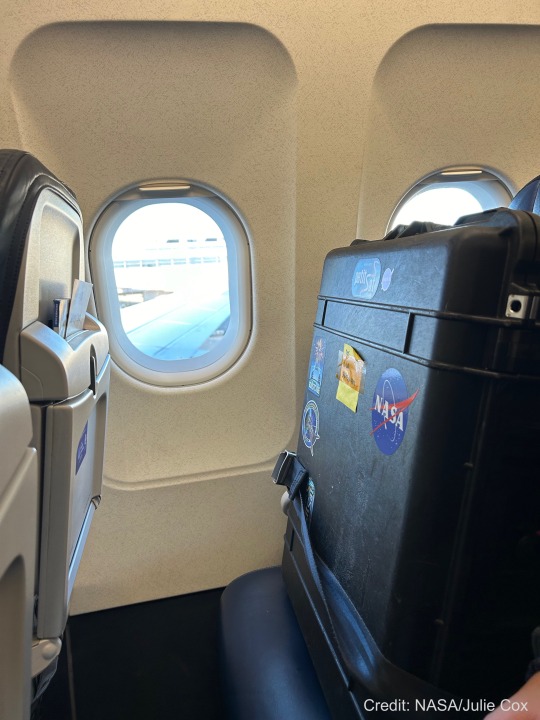
The next big step in BurstCube’s journey was a flight to Houston! The team packed it up in a special case and took it to the airport. Of course, BurstCube got the window seat!

Once in Texas, the BurstCube team joined their partners at Nanoracks (part of Voyager Space) to get their tiny spacecraft ready for launch. They loaded the satellite into a rectangular frame called a deployer, along with another small satellite called SNoOPI (Signals of Opportunity P-band Investigation). The deployer is used to push spacecraft into orbit from the International Space Station.
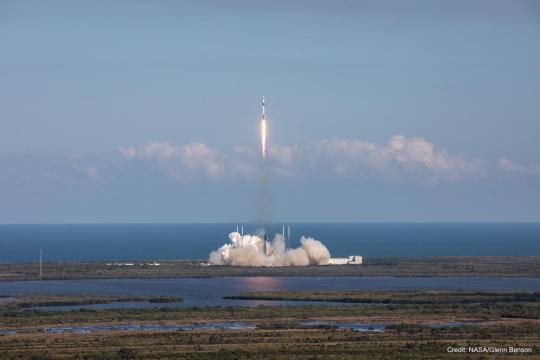
From Houston, BurstCube traveled to Cape Canaveral Space Force Station in Florida, where it launched on SpaceX’s 30th commercial resupply servicing mission on March 21, 2024. BurstCube traveled to the station along with some other small satellites, science experiments, as well as a supply of fresh fruit and coffee for the astronauts.
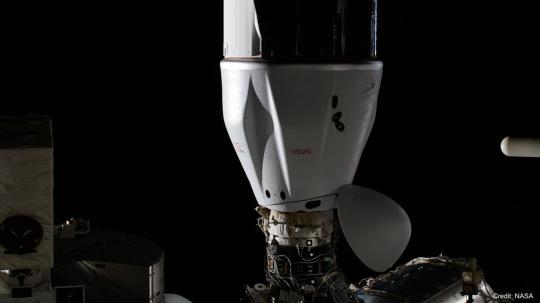
A few days later, the mission docked at the space station, and the astronauts aboard began unloading all the supplies, including BurstCube!
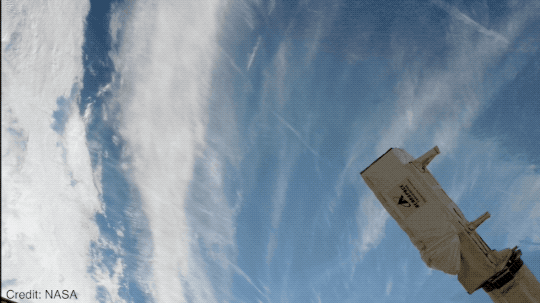
And finally, on April 18, 2024, BurstCube was released into orbit. The team will spend a month getting the satellite ready to search the skies for gamma-ray bursts. Then finally, after a long journey, this tiny satellite can embark on its big mission!
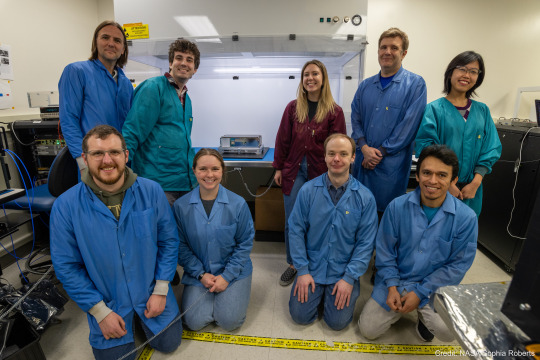
BurstCube wouldn’t be the spacecraft it is today without the input of many early career engineers and scientists. Are you interested in learning more about how you can participate in a mission like this one? There are opportunities for students in middle and high school as well as college!
Keep up on BurstCube’s journey with NASA Universe on X and Facebook. And make sure to follow us on Tumblr for your regular dose of space!
#tech#technology#dream job#jobseekers#NASA#space#spaceblr#universe#astronomy#science#gamma ray bursts#cubesat#smallsat#launch
321 notes
·
View notes
Text
please pass this around to all of your classmates, i don’t want anyone saying they didn’t get to vote
#scienceblr#historyblr#artblr#spaceblr#polls#my polls#this is certainly not going to do like my other poll that's running rn (it left containment)#but my brother and i were Discussing field trips and decided we needed input via The Nerds (affectionate)
19K notes
·
View notes
Text

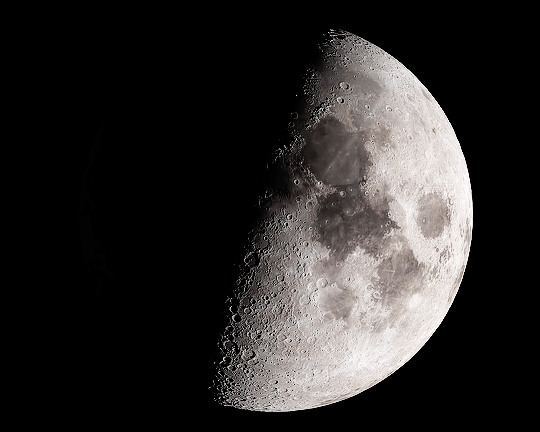
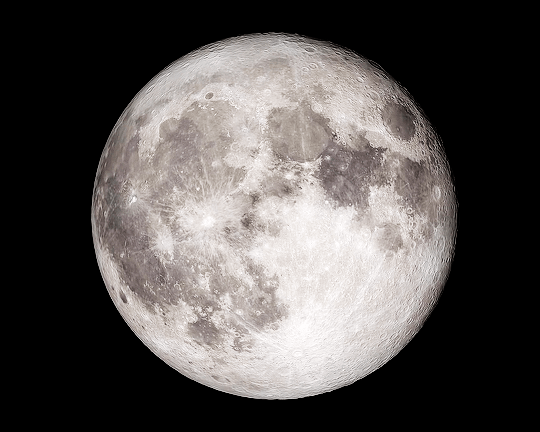
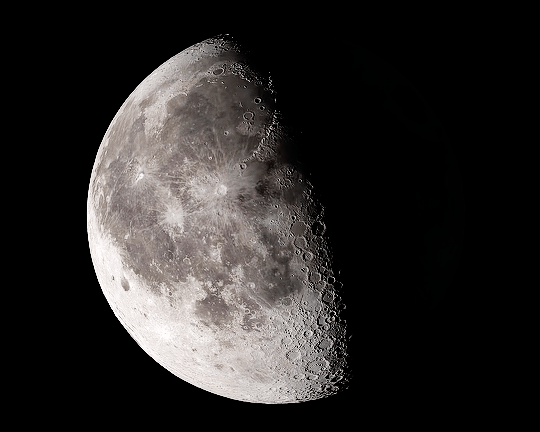
MOON PHASES 🌕
#moon#the moon#lunar calendar#moon cycle#space#moon phases#astonomy#nasa#solar system#spaceblr#time lapse#ellisgifs#look at her……. gf material fr <3#queue
7K notes
·
View notes
Text
Context: I have a theory, and i want to see if im right. for simplicity, its just the big three + the 'other' option. Apologies for no vanilla extract, i want actual data this time lol.
remember to reblog for a higher sample size!
#polls#statistics#data collection#the sun#the moon#the stars#space#galaxies#spaceblr#space aesthetic
11K notes
·
View notes
Text
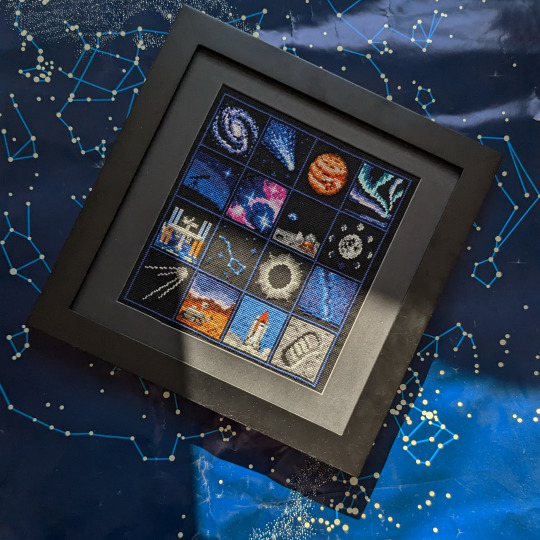
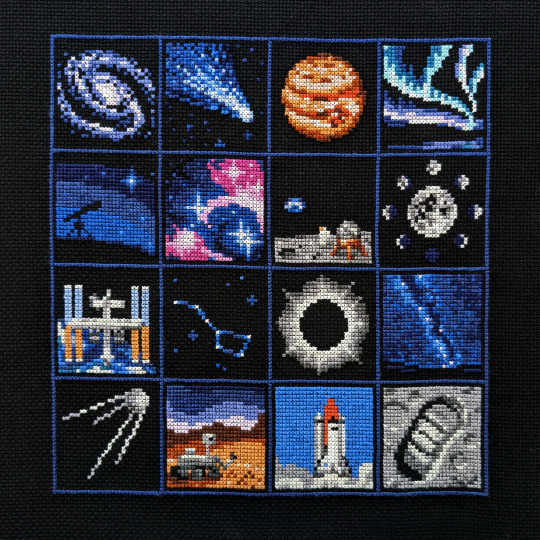

The last photos I took of the Space Sampler were seven years ago... a lot has happened since 2016, but my first pattern still holds a special place in my heart :)
[space sampler tag here] [pattern here]
#cross stitch#embroidery#astronomy#spaceblr#space sampler#made by me#id in alt text#seven years and one month...#that's really nice actually#anyway here's to the tumblr cross-stitch crowd#who's betting we're still here in 2030? ;)
419 notes
·
View notes
Text
NGC 5468
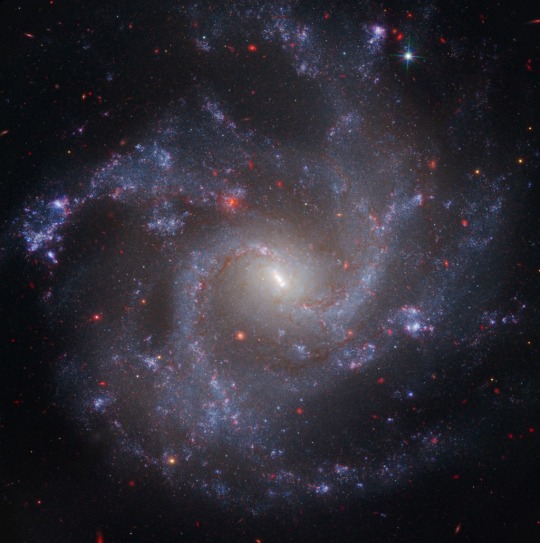
#ngc 5468#galaxy#nasa#nasa photos#nasa news#astrophotography#astronomy news#astronomy#hubble space telescope#spaceblr#space news#outer space#space#space photography#spiral galaxy
78 notes
·
View notes
Text
The Crab Nebula
August’s Space Object of the Month is the Crab Nebula, the remnant of a supernova observed by Chinese astronomers in the year 1054. Though they didn’t understand what they were seeing at the time, we now know they were witnessing was the death of a star 6,500 light-years from Earth. The supernova was visible during the day for an entire month, and remained visible at night for a further two years before it faded away.


At the centre of the nebula there is a rapidly spinning neutron star, 30 kilometres in diameter, emitting pulses of radiation as it spins on its axis. This pulsar, discovered in 1968 by Jocelyn Bell, ejects twin beams of radiation resulting in the star appearing to pulse at a rate of 30 times per second.
The nebula itself spans six light-years across, and is expanding at a rate of about 1,500 kilometres per second – 0.5% the speed of light.

#space object of the month#space#astronomy#astrophysics#space facts#spaceblr#studyblr#physics studyblr#my studyblr
165 notes
·
View notes
Text
yena the guardian

#spaceblr#space#outer space#galactic art#galaxies#galaxy#rainbow road#oc#original art#my art#digital art#artwork#art#digital drawing#drawing#illustration#illustrator#digital illustration#artists on tumblr#yena#procreate#digital artist#procreate digital artist
32 notes
·
View notes
Text

Nature: Heavenly Bodies
Sometimes in astronomy, a heavenly body has been virtually invisible until a single observer detects its presence and points it out to his colleagues, who then see it with increasing clarity. Perhaps a myriad of unknown senses are only awaiting our consciousness.
#Heavenly Bodies#Celestial Bodies#Space#outer space#planets#galaxies#stars#space aesthetic#space moodboard#Nature#nature aesthetic#nature moodboard#moodboard#aesthetic#space junk#spacecore#space nerd#space core#spaceblr#Marilyn Ferguson
22 notes
·
View notes
Text
GUYS oh my gosh I stumbled upon this tab on the NASA site and—
What did Hubble see on your birthday?? It gives you a picture and information! It's so neat!
#Can't specify year but IT'S SO NEAT#NASA#astrophotography#astronomy#spaceblr#hubble#hubble space telescope#of course you don't need to share your actual bday if you don't want to but I wanna see what pics others find!!#i'm plugging in random dates at this point bwahaha#(lies. i did 9/11 on purpose)#photography#space photography#space
68 notes
·
View notes
Text
lumped the astronauts and lunar phases together for ease, feel free to specify which is your favorite if you’d like.
34 notes
·
View notes
Text
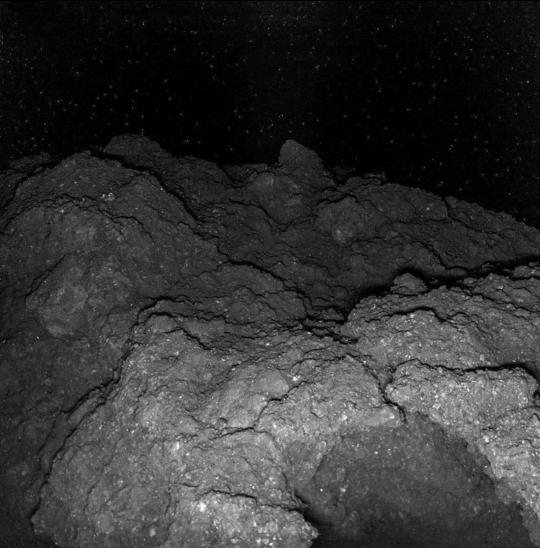
Surface photograph of Ryugu 162173 asteroid. Taken by JAXA's Hayabusa 2 space probe.
Image can also be found here.
28 notes
·
View notes
Text
(x)
#tiktok#tiktoks#science#space#mars#mars rover#mars rovers#opportunity#spirit#mars rover opportunity#mars rover spirit#scienceblr#spaceblr#300k#fun#universe#astronomy#music#mars rover playlists
119 notes
·
View notes
Text
On 03/08/2024, the Hubble Space Telescope spotted the galaxy NGC 4423, a galaxy around 55 million light years away from Earth in the Virgo constellation. Here’s the article NASA posted:

NGC 4423
#astronomy#hubble space telescope#nasa#nasa news#space news#spaceblr#outer space#space#ngc 4423#galaxy#astronomy news
24 notes
·
View notes
Note
Happy moon landing day!!
Hello, lovely! Whoever sent this, my little space and history loving heart thanks you! ♥️
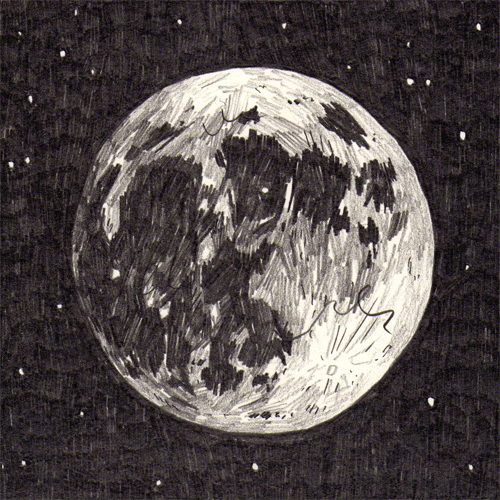
25 notes
·
View notes
